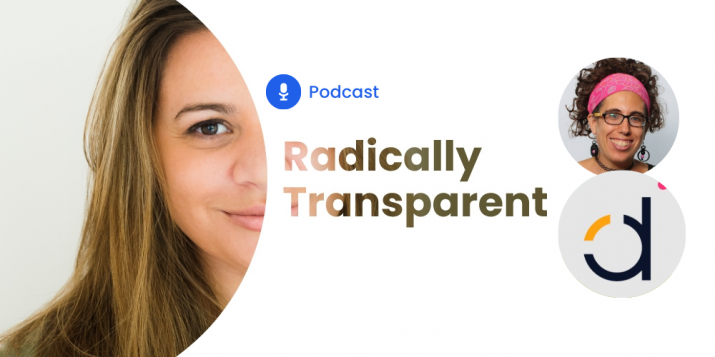
7 lead generation ideas for 2024
Unfortunately, for most businesses, new customers are not as easy to gather as pennies in a public fountain. However, there is a bright side: new technologies and tools enable businesses to take their lead generation game to the next level, improving customer acquisition and retention.
By 2027, GenAI will take over 30% of traditional lead generation tasks such as lead scoring and customer data analysis. With AI taking over more time-consuming tasks, the world is your team’s oyster, and you have much more freedom to brainstorm innovative campaigns that generate more and higher-quality leads.
From hyper-engaging videos to customized landing pages, lead generation in 2024 ensures that your messaging resonates with your customers’ specific interests and pain points. But when the competition is high, you do need to get creative.
What is B2B lead generation, exactly?
B2B lead generation is about identifying potential customers (leads) and nurturing their interest in your product or services until they convert (aka become actual clients). This process is at the top of your sales funnel and buyer journey; without it, you’d have no new customers (or very few!).
Unlike demand generation tactics, which target people who have never heard of your brand and aim to build their interest and awareness, lead generation is about nurturing people who are already familiar with your products but have yet to convert. Generating demand is great, but your business won’t survive without actual sales. And it’s not just about creating the highest number of leads—you need to think about the kind of leads you need.
37.1% of marketers state generating high-quality leads is their biggest challenge. Consider a prospect who has attended a webinar and subscribed to your emails. However, upon examining this lead’s information, you can see this is a student doing market research, so you know you won’t get any business from them. Technically, they are a lead, but not a great-quality one.
Understanding lead data and scoring leads will help you succeed in your lead generation. Then, it’s about leveraging channels such as lead generation landing pages, social media, and search engines to drive leads down the funnel and increase conversions as fast and efficiently as possible.
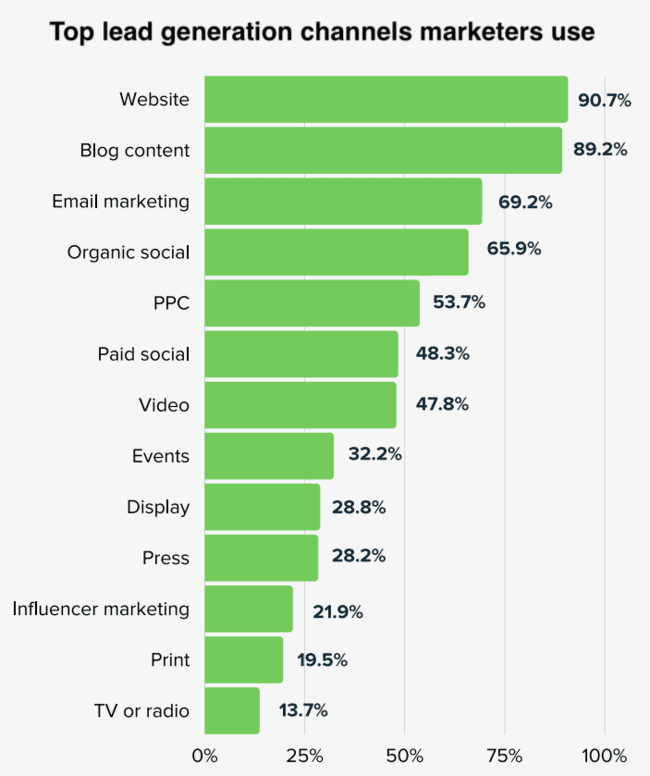
7 B2B lead generation ideas for 2024
1. Personalized outreach
Finding and reaching out to dozens of potential new customers can be arduous. More than that, social networks are wising up, and for B2B marketers, that includes LinkedIn. LinkedIn now restricts connection requests to 100–200 invites weekly, dropping significantly from the previous 700 invites. That can be enough if you’re a small business with a small prospects pool, but when it comes to generating leads – the more (high-quality) leads, the merrier.
With a limit on the number of prospects you can engage with, you and your sales team must ensure that each invite and interaction is thought through. You must also make each interaction count by personalizing your messaging based on user data.
This personalization includes not just addressing people by their name but also addressing a specific pain point or even mentioning something they have shared recently on social media to show that you have done your research before contacting them. Use social media tools like Oktopost to gather enriched social data and understand what your customers want from you.
2. Interactive content
Content marketing is and will always be king. But not any type of content works, and certainly not in 2024. Today’s prospects want to be immersed in your content, so you must create immersive experiences through, for example, VR technologies and live videos and chats.
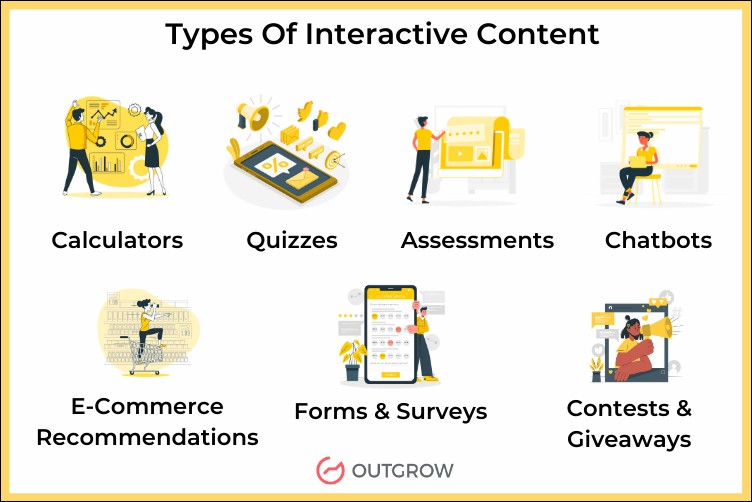
Your content should also be socially responsible. Customers want transparency and a purpose-driven narrative and expect brands to take a stand on social issues. Ensure you know your brand and values from the inside out and that those are portrayed in all your content. This is particularly crucial in employee advocacy programs, where your employees represent your brand and what it stands for.
3. Voice & search marketing
Over 500 million electronic devices worldwide feature Siri, and almost 98% of smartphone users have used Siri at least once. Siri isn’t alone—Alexa and Google Assistant are equally popular. With the continuous rise of voice assistants in 2024, businesses like yours must focus on optimizing their content for conversational, long-tail keywords that mimic natural language queries.
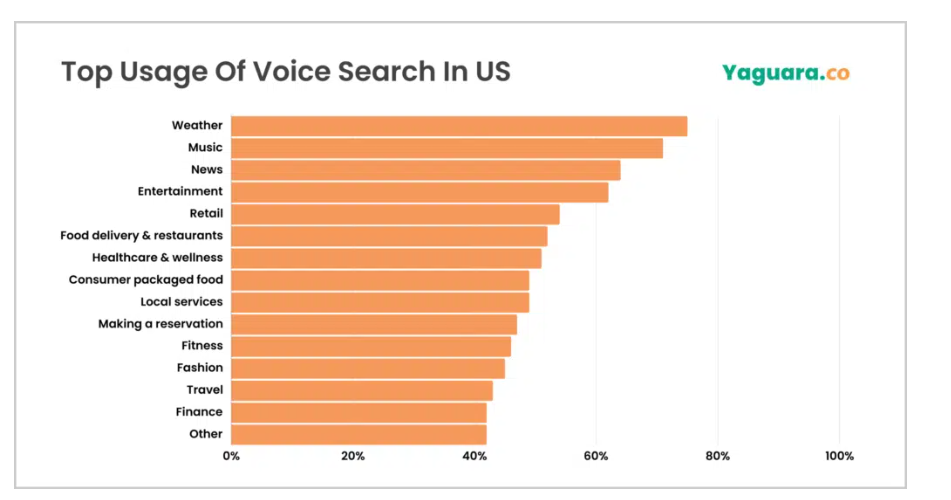
This “voice optimization” includes understanding and anticipating how potential clients might verbally inquire about their services or products. You can do market research or conduct a user test to understand what customers are voice-searching for.
Ensure that your website content is structured for featured snippets and quick answers, which can enhance visibility in voice search results. Additionally, try incorporating schema markup for FAQ sections and local SEO strategies to improve voice search performance and remain accessible.
4. Social selling
Social selling is about leveraging your sales team to sell more. It sounds redundant, but there is more to it than meets the eye—your salespeople must use their own social media platforms and networks to interact directly with potential customers.
This type of one-to-one human interaction allows salespeople to connect better with leads, share relevant content, and nurture relationships in a more personalized manner. By leveraging social networks, social selling aims to create authentic interactions that can increase trust, brand loyalty, and sales conversions. 87% of sellers confirm that social selling has been effective for their business, so if you haven’t tried it with your team, you may be missing out.
You can use a social media management platform like Oktopost to implement an efficient and future-proof employee advocacy program for social selling. This Oktopost feature lets your employees dynamically select the content they want to share, post pre-approved messages, and even see the results of their efforts. Consider also LinkedIn marketing training for your sales team so they can improve their social selling techniques.
5. Account-based marketing
Customers love to feel unique and cared for, and there’s no better strategy than account-based marketing (ABM) for this. Use advanced data analytics and AI to enable highly targeted campaigns such as location-based emails or dynamic product suggestions based on users’ Google searches. Integrate these campaigns with customer relationship management (CRM) and marketing automation platforms to streamline operations and enhance lead scoring.
You can also produce a series of personalized video messages or host exclusive virtual events to create impactful experiences for potential leads. As always, understand each account’s unique pain points and goals and refer to them in every piece of content you share with it.
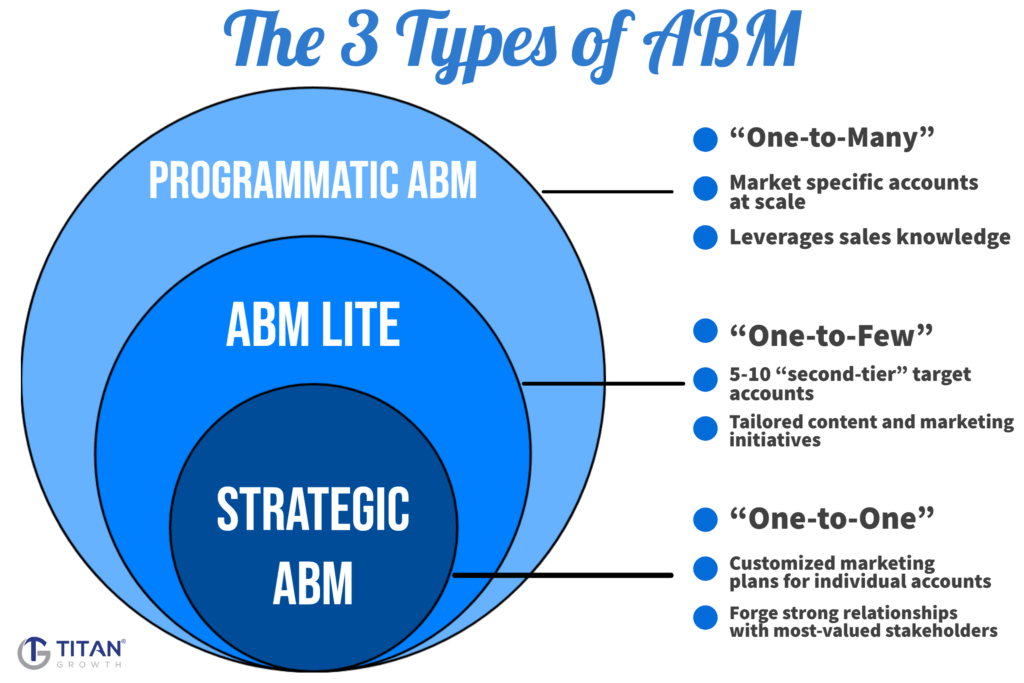
6. Podcasting
Podcasts had their big boom a few years ago, but they remain relevant today. There is a catch, though: with over 5 million podcasts available to listen to on streaming platforms, you need to go out of your way to produce a podcast that grabs your leads’ attention.
Ensure you research your audience and the podcasts they already listen to (aka do some serious competitor analysis). You would want to create a podcast that delivers value and isn’t salesly so you can build trust and thought leadership. You should track listener metrics such as downloads and streams, social media engagement, and reviews to measure success.
Consider also utilizing video and creating a webinar based on this podcast. This 2-in-1 approach ensures you are repurposing and maximizing your resources while broadening your reach. However, if you want to try webinars, follow a clear webinar marketing strategy to boost registration numbers.
7. Video video video
People are already glued to their screens, so you only need to show up and deliver engaging branded content to gather their attention. The video type you want to create depends on the channels you are using.
For example, short-form videos are preferred for social media. This is because users are on the go, so they don’t have as much time as they do when sitting on their couch on a Friday night. 75% of people watch short-form video content on their mobile, so you need to optimize video formats for mobile and keep them at a maximum of 60 seconds. Also, include captions, as many users will watch videos with their sound off.
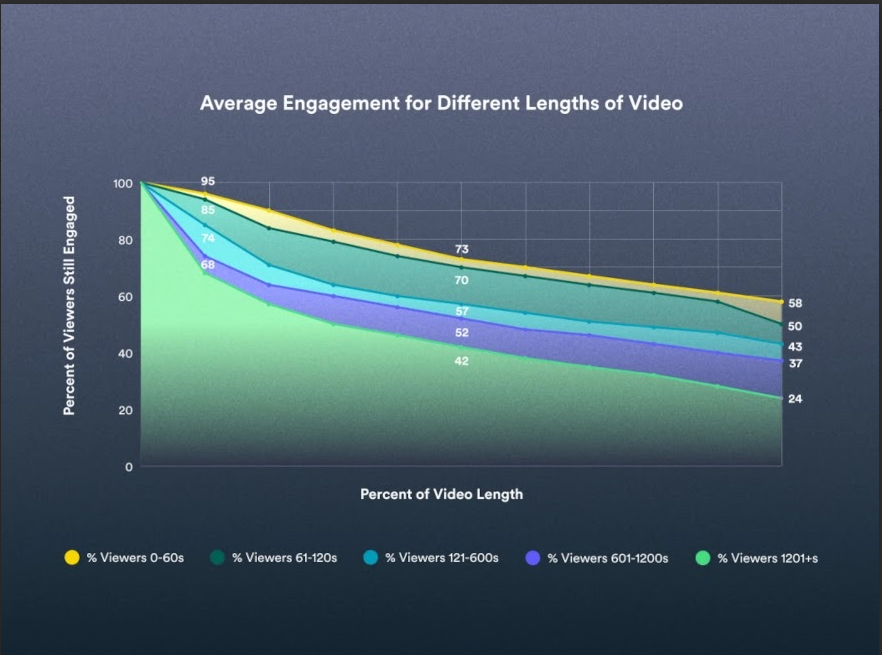
Another format to consider is live streaming. 161.4 million people watched live video content in 2023, and this number continues to grow in 2024. You can live stream special events, announcements, engaging product demos that work just like discovery calls, or even fun “meet the team” videos.
And yes, B2B prospects are just as engaged by company videos as B2C audiences. Speak to their pain points and interests and be as personable as possible (B2B doesn’t mean no personality!). To measure success, keep track of conversion rates, clicks, and engagement rates.
Recommended for further reading
Improve your lead gen for 2024 and beyond
Lead generation in 2024 is forcing marketing teams worldwide to step up. It’s not about your team or what they want to produce anymore – it’s about what your customers want from you. By implementing these tips and experimenting with different marketing channels and formats, you can improve the effectiveness of your lead gen efforts and, most importantly, ensure that they are sustainable for years to come.
One of the best ways to streamline lead generation efforts is to leverage a social media management tool like Oktopost. Oktopost lets you manage your efforts across any social media channels, integrating with essential marketing automation tools so you can track leads and gather important customer data. It also offers features such as employee advocacy, social listening, and social data to completely revamp your digital marketing efforts. Learn more here.
